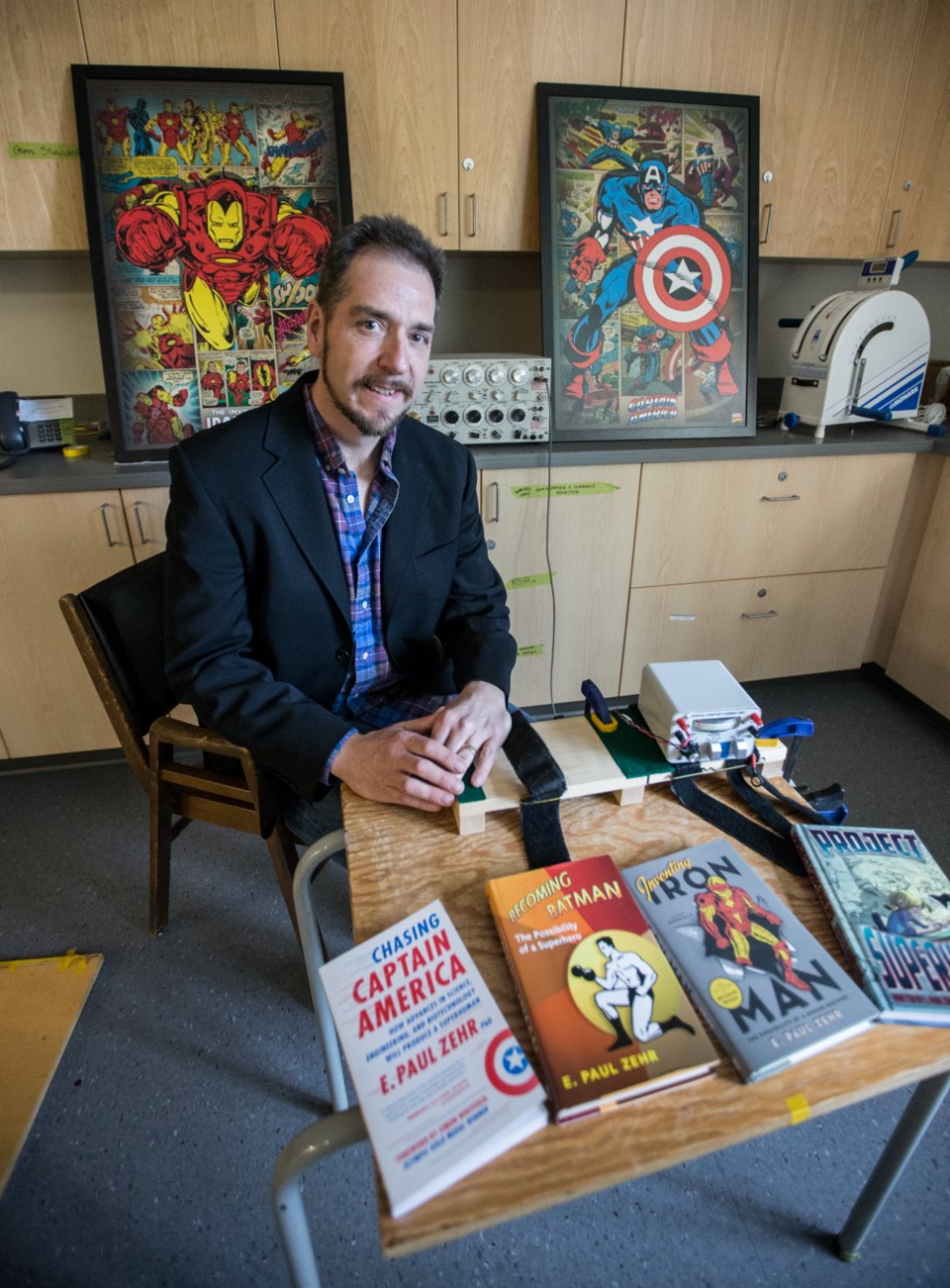University of Victoria neuroscientist and author E. Paul Zehr has invoked Batman to demonstrate how training can enhance a human body and Iron Man as a stand-in for human enhancement with technology.
Now, from his lab in the university’s Centre for Biological Research, Zehr brings forth a new book, Chasing Captain America. This time, the superhero demonstrates the medical-scientific possibilities of recreating an entirely new human.
“The whole Marvel story of Captain America was about changing the biological structure of this little guy, who kept getting rejected from the army, into this super-soldier,” Zehr said.
“So, it fits in with the focus of the book, which looks at the abilities we already have with biomedical and genetic engineering to actually alter human biology.”
Zehr‘s latest book completes a trilogy using superheroes to demonstrate what human beings can become. As a scientist, a karate practitioner and a longtime fan of comic books (he’s particularly partial to Thor) the whole idea has always intrigued Zehr.
Becoming Batman (2008) looked at how far advanced training and discipline could transform a regular person, such as Batman’s alter ego Bruce Wayne, into a superhero, given the limits of human biology, anatomy and physiology.
With Inventing Iron Man (2011), Zehr looked at the fictional armoured suit of character Tony Stark. It was a good illustration of technical possibilities and ambitions.
“Then, I thought maybe there is a trilogy of books here,” Zehr said. “I could complete the whole idea by using the concept of Captain America.
“So, we go from training biology without altering it [Batman] to amplifying biology with technology [Iron Man] to Captain America, where you really change the function of a human body by altering its biology,” he said.
Marvel Comics gives birth to Captain America during the Second World War. Steve Rogers, whose small, spindly body is outsized by his enormous patriotism, volunteers to take a new, experimental soldier serum. As a result, he is transformed into a buff superhero.
In Chasing Captain America, Zehr looks at the dizzying heights already being achieved and approached by medical science, with interventions such as hormone therapies, stem-cell implants, genetic engineering and the implantation of technology directly into a body.
“What we are able to do now is alter the expression of what it means to actually be human,” Zehr said. “We really need to think about what it means to be the first species that has the ability to change its own genetic profile.”
Zehr questioned the gulf between people who cheer when medical science helps a disabled accident victim walk again, but calls foul if an athlete uses the same treatments to boost performance.
He pointed to soccer star Lionel Messi as an example. Now fivefoot-seven, Messi, as a child, was treated for a condition that threatened to leave him unusually small. Furthermore, his club, Barcelona, signed him on at age 13 and paid for the growth-hormone treatment.
Zehr likes to pop in hypothetical twists. What if Messi was on pace for normal growth, but excelled at basketball, not soccer? “What would people say if he was given the same growth hormone, but instead of topping out at five-seven, he went on to reach six-foot-nine or taller so he could play in the NBA?” he said.
Zehr also likes to go where only comic books are now treading: Space travel.
“We are going to have to modify the human body if we are going to live on other planets,” he said. “We don’t have time for evolution to adapt us.
“What does it mean to go out there, and just what are we prepared to accept as limits?” Zehr asks.
“Maybe there are no limits.”
Chasing Captain America: How Advances in Science, Engineering and Biotechnology will Produce a Superhuman will be released on April 17.



